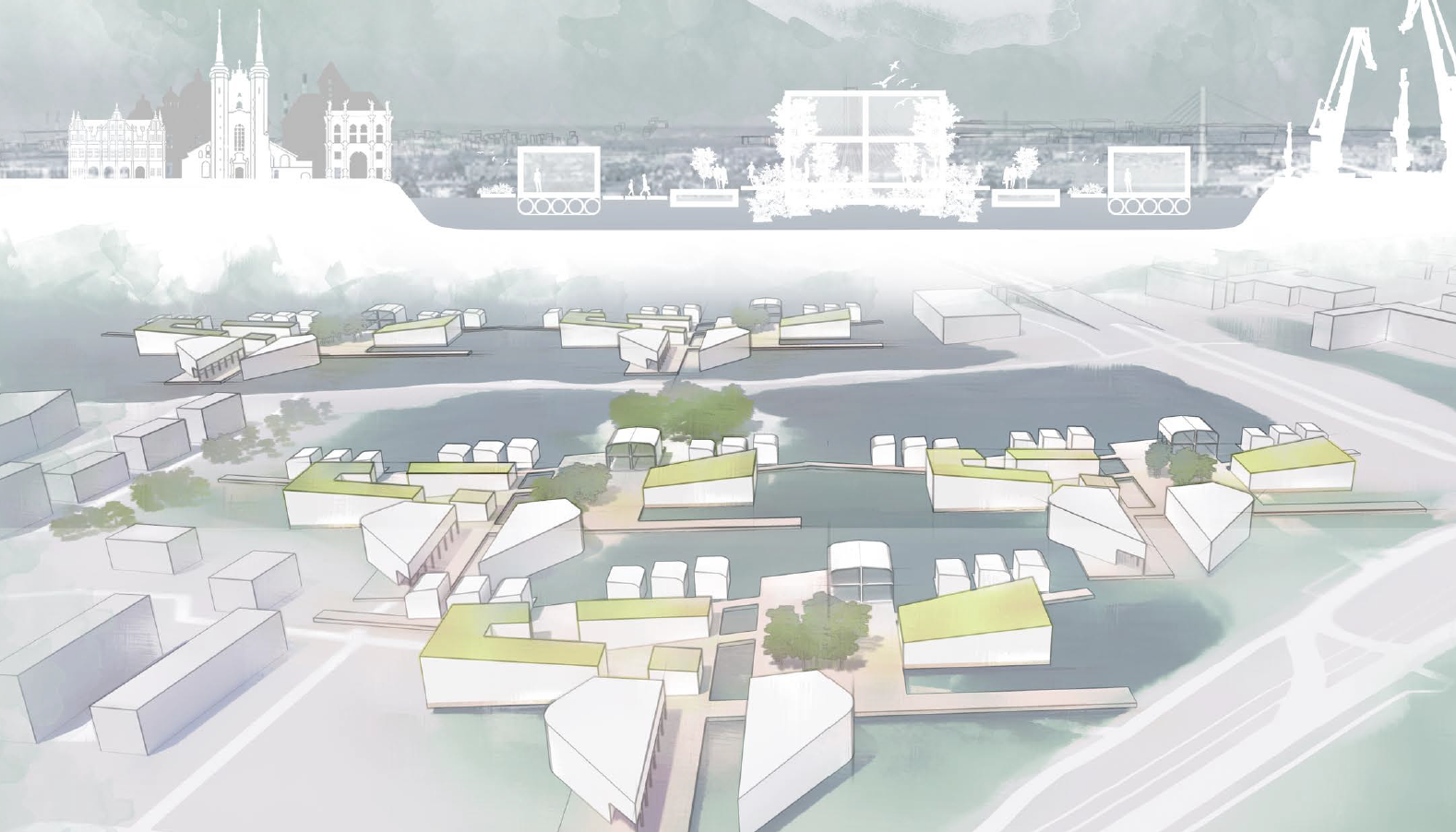
Amphibious Future
Landscape Architecture
Kielce University of Technology
The project entitled Amphibious Future is a direct response to the problem of global warming and the rising of seawater levels. The study area covers a coastal polis located at the Baltic Sea. The Polish coastal zone is regarded as one of the most exposed to sea-level rise in Europe with over 270,000 people living in flood risk areas. In Gdansk, single-family houses are most endangered form of development. The site analysis proves the need to adapt to the existing city structure to climate change.
The project includes two approaches to the problem and separate flood resilient solutions. The first one is focused on the protection of the cultural city heritage by installing at the Baltic Sea a set of mobile barriers. The main aim is to save the historic buildings and monuments that cannot be moved away. The barrier will rise when the water level will be high but it will enable the work of fishing boats and ensure the international trade
that takes place in the study area. The second solution proposes the new development pattern for the single-family housing based on floating technologies combined with the change of the existing landforms. The project covers a system of polders developed with a mixed-use neighborhood that could float and adapt to different flooding scenarios.
Amphibious Future is based on living with the seawater cycles and accepting the forthcoming changes, and not fighting with nature.
